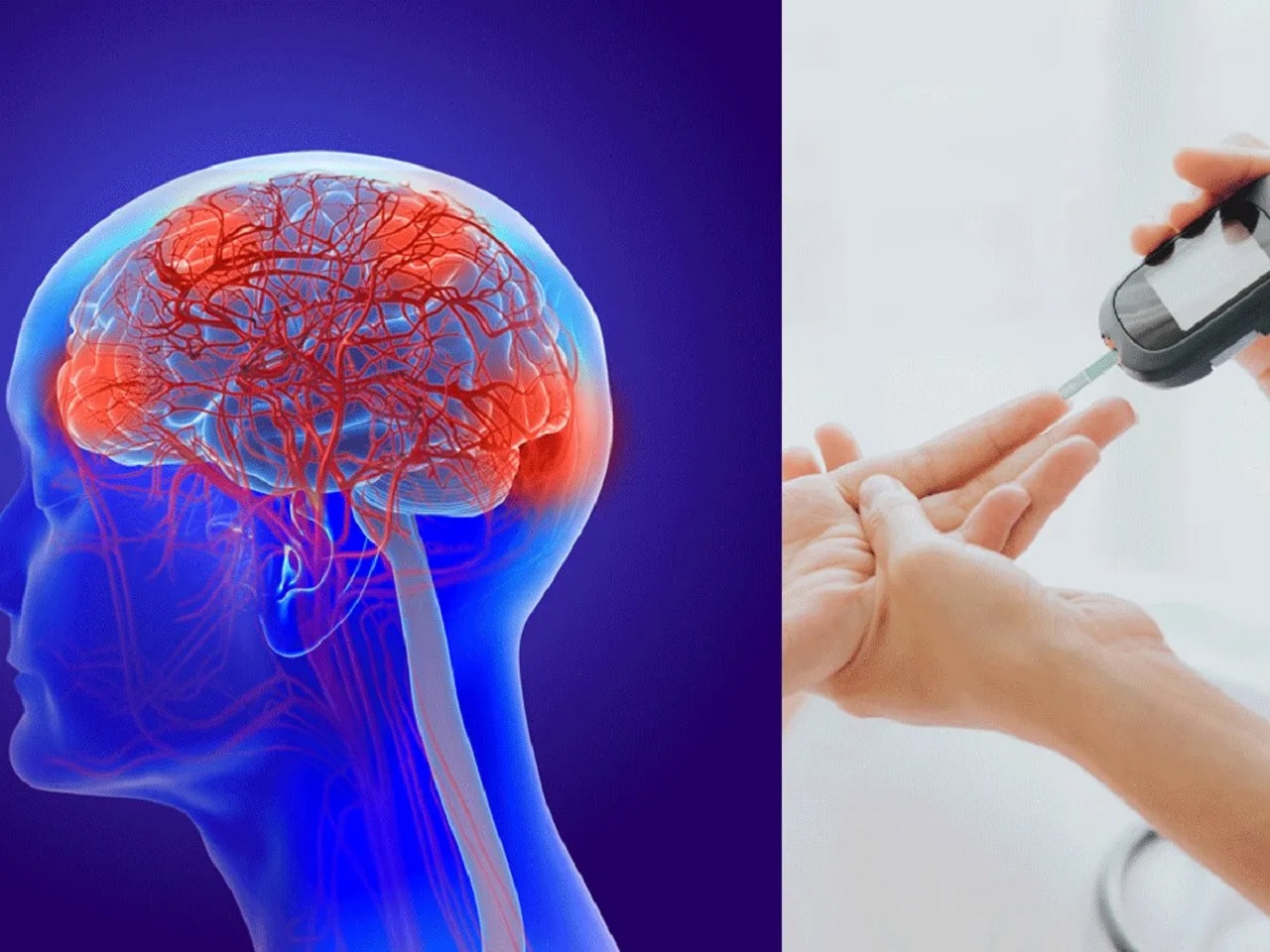Statistics indicate that the risk of stroke in diabetic patients is 2 to 4 times higher compared to non-diabetic individuals. Understanding the correlation between stroke and diabetes, along with preventive measures, is crucial. This article explores the fundamental information about stroke and diabetes, reasons behind the increased risk in diabetic patients, and effective prevention strategies.
1. Basic Information on Stroke and Diabetes
1.1 Stroke Overview
Stroke is a severe condition characterized by significant damage to the brain, resulting from interrupted or substantially reduced blood supply, leading to oxygen and nutrient deprivation. Causes may include arterial blockages due to atherosclerosis or blood clot formation, as well as weakened blood vessels that rupture, causing bleeding and brain damage. Each minute during a stroke, approximately 2 million brain cells perish, often irreversibly, posing a high risk of mortality or severe complications such as paralysis, speech impairment, and cognitive decline.
1.2 Diabetes Overview
Diabetes is a chronic condition marked by consistently elevated blood glucose levels, either due to insufficient insulin production by the pancreas or reduced insulin effectiveness in the body. Poorly controlled diabetes can lead to severe complications affecting the heart, nerves, kidneys, skin, eyes, and an increased risk of stroke. Studies indicate that individuals with diabetes face a 2-4 (2 to 4) times higher risk of stroke compared to those without diabetes.
2. Why Are Diabetic Patients Prone to Stroke?
Elevated blood glucose levels contribute to vascular damage, creating conditions for the development of arterial plaques and blood clots, leading to blockages or ruptures in blood vessels nourishing the brain. In type 2 diabetes patients, both glucose and insulin levels are elevated, fostering the production of triglycerides and the formation of arterial plaques. Increased inflammation in diabetic patients further promotes arterial plaque development. Uncontrolled diabetes heightens the risk of high blood pressure, coronary artery disease, and elevated cholesterol levels, even in prediabetic stages.

The risk of stroke in diabetic patients is 2 to 4 times higher compared to non-diabetic individuals
3. Signs of Stroke in Diabetic Patients
Diabetic patients experiencing a stroke may exhibit common stroke symptoms such as facial drooping, slurred speech, difficulty expressing thoughts, numbness, weakness, severe headaches, blurred vision, and dizziness. Recognizing these signs promptly is crucial, following the F.A.S.T and B.E.F.A.S.T guidelines.
In diabetic individuals, limb weakness and irregular heart rhythms are more prevalent than in non-diabetic individuals.
4. Stroke Prevention Strategies for Diabetic Patients
To prevent stroke, diabetic patients should adhere to their treatment plans. Depending on their specific condition, physicians may prescribe medications to reduce the risk of diabetes-related strokes. Additionally, maintaining a healthy lifestyle is essential.
4.1 Nutritious Eating Habits
Diabetic patients can reduce stroke risk by:
– Consuming multiple small meals throughout the day with controlled portion sizes.
– Opting for whole grains and unprocessed carbohydrates.
– Increasing fiber intake through vegetables, fruits, legumes, and whole grains to promote smooth digestion and blood sugar control.
– Including omega-3 fatty acid-rich fish, such as salmon and tuna, in their diet.
– Limiting saturated and trans fats found in processed foods, snacks, red meat, and baked goods.
– Restricting salt and sugar intake in daily meals.
– Minimizing alcohol and tobacco use.

Fiber foods are good for stroke and diabetic patients
4.2 Regular Physical Activity
Research indicates that exercising for at least 30 minutes a day, five days a week, can significantly reduce the risk of stroke.
4.3 Disease Management
In addition to monitoring blood glucose levels, diabetic patients should pay attention to blood pressure and cholesterol levels. Controlling blood pressure is crucial in preventing stroke for both diabetic and non-diabetic individuals. Managing lipid profiles through a healthy diet and medication, if necessary, is essential.
For individuals with a history of stroke or transient ischemic attack (TIA), statin medications may be prescribed to reduce the risk of arterial plaque formation.
Early detection and effective management of diabetes and related risk factors enhance the chances of preventing stroke. Screening packages, such as Thu Cuc TCI’s stroke risk assessment, including tests for diabetes, lipid profiles, liver and kidney function, enable early identification and control of stroke risk factors.

Thu Cuc TCI has package of risk stroke screening
In conclusion, stroke in diabetic patients poses a significant threat, emphasizing the importance of early detection and optimal management of diabetes and associated risk factors. For consultation and appointments, patients can contact us at 1900 55 88 92 for personalized support and scheduling.








